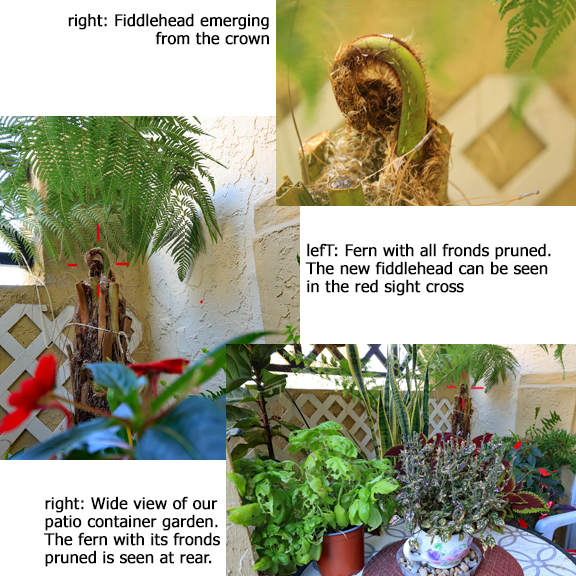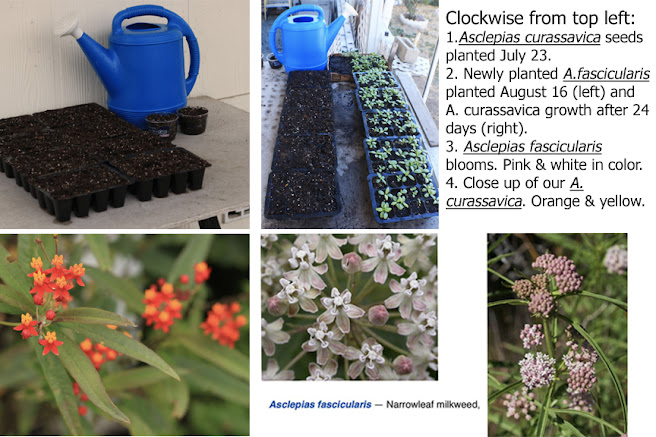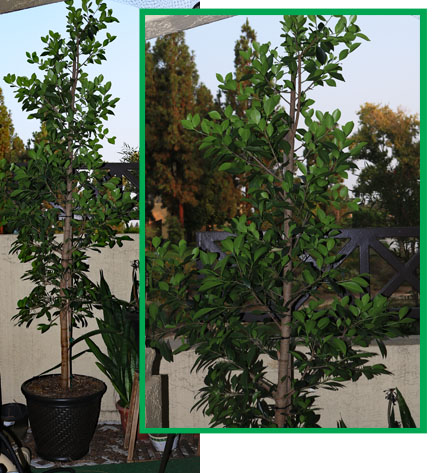Our fern was fried...

Fern rescue... The large fern in our patio container garden in Chula Vista, California was apparently fried during our 100 degree heat wave. By last weekend all of its fronds had turned brown. But not to worry. As we pruned off the dried fronds (literally all of them) we found an emerging fiddlehead in the crown. It pops out more each day. Ferns prefer cooler, shady, and moist conditions. When cooler weather returns we expect it to recover. It might need several months before it fills in again. Please check back.



